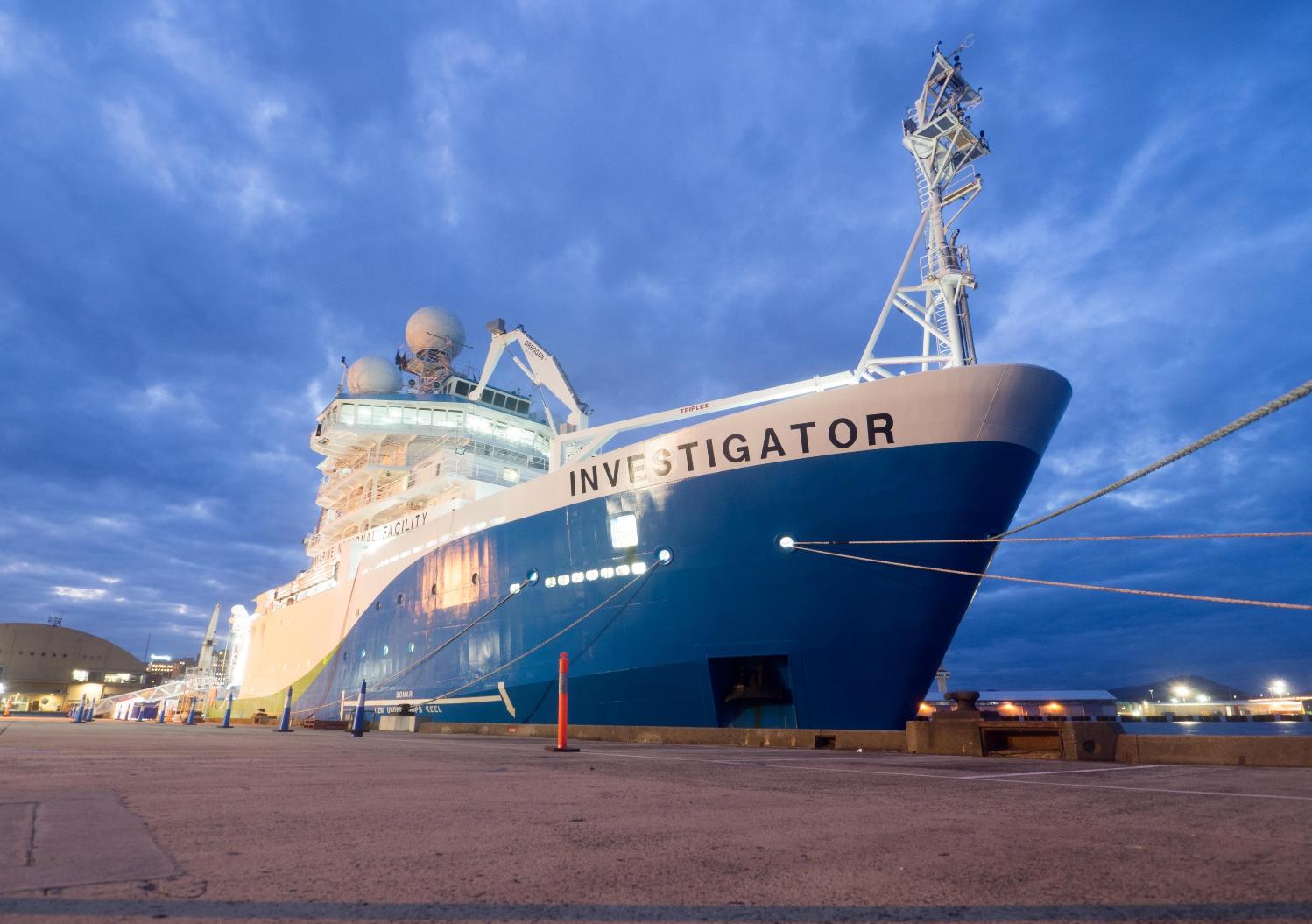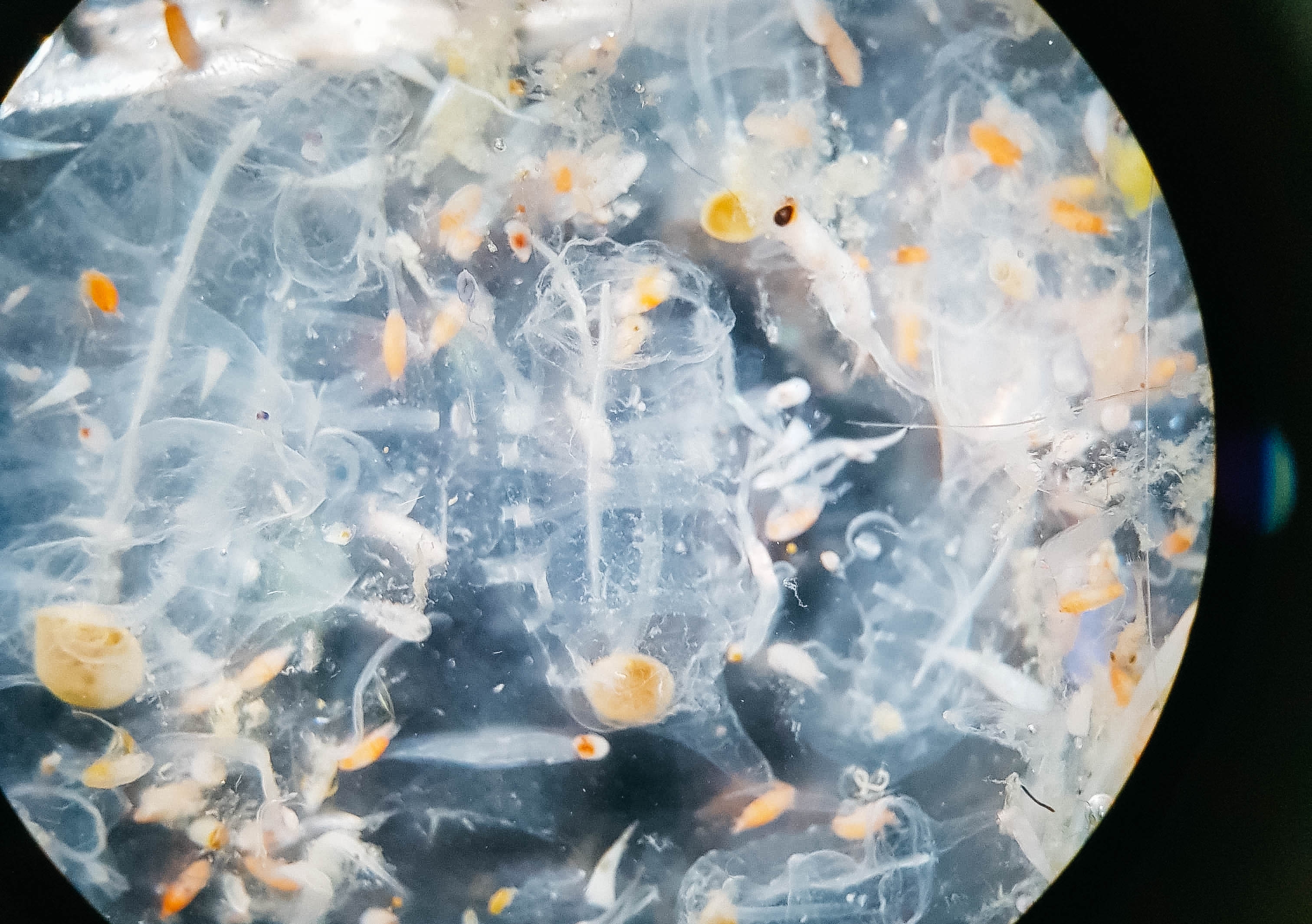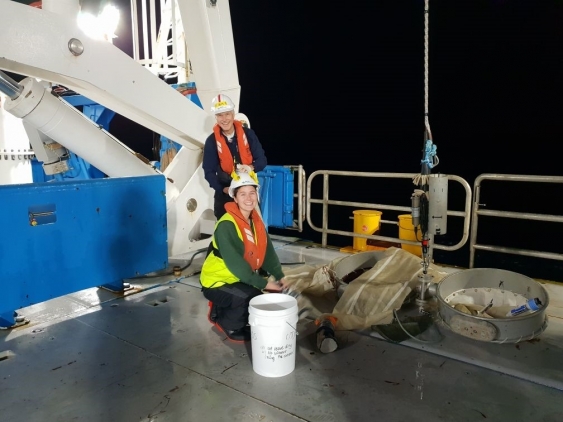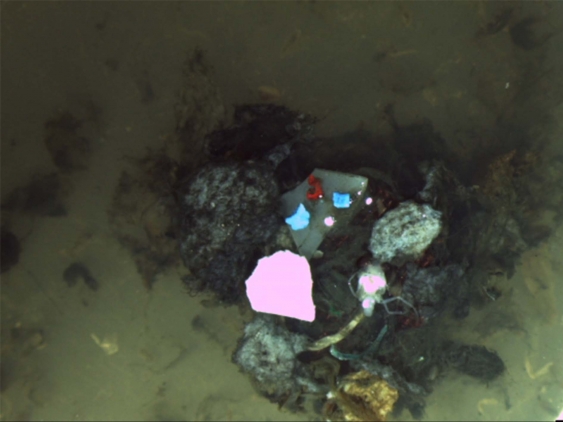June 27 - July 10, 2021: Issue 500
Four Week Voyage Yields Secrets To Changing Oceans: East Australian Current

June 22, 2021
by Diane Nazaroff, UNSW
Several UNSW scientists have returned from a four-week voyage along Australia’s eastern coastline gathering data on the changing East Australian Current [EAC] and observing its effect on fish reproduction.
While oceanographers from UNSW helped the crew on board CSIRO Research Vessel (RV) Investigator to recover and redeploy deep ocean moorings off North Stradbroke Island and Brisbane, UNSW biologists sampled for larval fishes along the eastern seaboard, between Hobart and Brisbane.
UNSW Science’s Professor Iain Suthers, a biological oceanographer based at the Sydney Institute of Marine Science, said the moorings are part of the national ocean monitoring program, the Integrated Marine Observing System.
The mooring depths range from 500 metres to five kilometres deep, measure the temperature and salinity of the EAC over nine years, and need to be serviced by CSIRO every 18 months.
“This research is critical to evidence of long-term trend at key locations, to understand which new fish species are coming down the coast because of changes in the East Australia Current that flows from the Coral Sea south towards Tasmania,” Prof. Suthers said.
“We know that climate change is causing the EAC system to warm significantly more than other regions, and as a consequence, it is bringing the larvae of tropical reef fish into our temperate rocky reefs off Sydney, Eden and even Hobart.
“Some of these tropical species eat kelp, removing important habitat and productivity.”

Oceanographers from UNSW helped with the operation and sampling of the Conductivity, Temperature and Depth instrument (pictured) which recorded vertical profiles of water mass properties. Photo: Maurice Huguenin.
The oceanography team included UNSW Science’s Dr Amandine Schaeffer and Dr Michael Hemming from the School of Maths, and a PhD candidate in the Climate Change Research Centre, Maurice Huguenin.
“CSIRO scientists are now analysing the 18 months of data we collected from the deep ocean moorings, which will be invaluable to understand the trends in the EAC, including below the surface where most of the transport occurs,” Dr Schaeffer said.
“We also chased eddies (rotating bodies of warm ocean water), trying to find and characterise the evolution of a frontal eddy, which was travelling southward at the edge of the EAC between Fraser Island and Brisbane.
“We believe that these 20 to 50km patches of rotating water are critical for the interaction and transport of water from different origin (from the shore, the tropics or deep water), creating a very distinct habitat for marine life.”
While the moorings were recovered during the day, the biology team from UNSW worked at night sampling larval fish caught in plankton nets such as goatfish, snapper, anchovy and eels.
“We were examining the biology and oceanography that drives the fish communities to become more tropical ecosystems, otherwise known as ‘tropicalisation’,” Prof. Suthers said.
“From each net we sorted hundreds and sometimes thousands of larval fish along with the small zooplankton and jellyfish which affect the survival of these larval fish.”

Photomicroscope view of zooplankton, including a salp (Salpa fusiformis). Photo: Kylie Pitt.
He said the 2-10 mm long larval fish are in embryo and juvenile form and are translucent or even iridescent when alive.
“They live in plankton but are beautiful representations of adults, although the taxonomy is not yet well understood,” he said.
“We took photographs and a sample of their tissue for their DNA to indicate their species and morphology, to prepare for future identification technologies such as artificial intelligence.”
The scientists will compare the new samples with ones caught during previous RV Investigator voyages and data from the Integrated Marine Observing System, which has been operating since 2006.
Prof. Suthers said scientists already know the EAC is transporting larval fish into new territories.
“For example, the pink snapper in Eastern Victoria come from New South Wales,” he said.
“Victoria is also getting yellowtail kingfish for three out of 12 months, but in 10 to 20 years of ocean warming, Victoria will see these fish for up to six months a year.
“The tropical mahi mahi fish will soon be a regular Victorian and Tasmanian fish; while a sea urchin found off New South Wales now occurs in Tasmania and has consumed and removed the kelp which provided habitat for abalone and lobster.”

Iain Suthers and Megan Suthers (UNSW) collecting zooplankton from a plankton net. Photo: Supplied.
During the RV Investigator voyage, honours student Clare Cao and post-doctoral researcher Paloma Matis from UNSW’s School of Biological, Earth and Environmental Sciences found a variety of different larval tuna, some of which have not been described off eastern Australia.
The larval fish samples also assisted an ongoing study by UNSW PhD student Charlie Hinchliffe from the School of Biological, Earth and Environmental Sciences, who compared the growth and mortality of larval sardine with the previous mooring voyage in September 2019.
“The ratio of growth and mortality determines the overall survival of sardines, which helps to forecast sardine numbers in one to two years time,” Prof. Suthers said.
“We are closing in on the 100-year-old question about why fishery yields fluctuate from year to year.
“It’s a fundamental challenge of fisheries science.”
Prof. Suthers said it was both surprising and concerning to see an abundance of plastic fibre in the plankton tow samples off Maria Island and Brisbane.
“We haven’t seen as much plastic fibres before as we did on this trip,” he said.
“We estimate that plastic shreds were on average about five for every 10 cubic meters of water that we sampled.

Microplastics found during larval fish sampling. Photo: Clare Cao.
“It would be interesting to go back to our stored samples from the 1980s to document the trend, and with this baseline we could then determine how successful our efforts are to rid the ocean of plastic in the future.”
Ms Cao, Mr Hinchcliffe and Dr Matis will publish their findings on the data collected on this voyage by the end of this year.
Prof. Suthers said the findings will be instrumental during his Fulbright Scholarship at fisheries and science centres in California next year.
All the data collected on the voyage will be used to advise fisheries management agencies on what changes in fish stocks they can expect and how they will need to adapt to climate change.
This research was supported by a grant of sea time on RV Investigator from the CSIRO Marine National Facility.
Observing Phytoplankton Helps Us Understand How The Southern Ocean Food Web Is Responding To Environmental Change
28 May 2021
IMOS is making phytoplankton data collected in the Southern Ocean available through the AODN Portal.
Phytoplankton play an important role in marine ecosystems, forming the base of pelagic food webs. The Southern Ocean is changing rapidly therefore tracking phytoplankton is fundamental to understanding and modelling ecosystem changes.
For example, warming around the western Antarctic Peninsula, coupled with thinning and reduced duration of the sea ice cover, has caused a shift in phytoplankton diversity and abundance from large, robust diatoms to smaller cells. This might have led to a shift from cold-water krill to warmer-water gelatinous salps, as salps can ingest far smaller phytoplankton than krill.
IMOS is currently analysing phytoplankton communities sampled along Continuous Plankton Recorder (CPR) transects in the Australian sector of the Southern Ocean. Any changes in species composition and abundance spatially, seasonally and inter-annually are recorded, and then the data are uploaded to the Australian Ocean Data Network (AODN) Portal.
The Australian Antarctic Division have deployed Continuous Plankton Recorders in the Southern Ocean for 30 years, offering an excellent long-term data set for researchers monitoring overall conditions in the Southern Ocean. IMOS is also contributing to the CSIRO image database for marine plankton and assisting with the construction of identification guides for the hundreds of taxa that have been found.
Along with the routine phytoplankton analysis of Southern Ocean CPR silks, we have been using Scanning Electron Microscopy (SEM) to identify problematic taxa. Overall, the SEM work provides excellent qualitative data – in ‘value adding’ to information already gleaned from light microscopy – but it is not a realistic method for quantitative analysis of CPR samples.
How to access the data:
The Southern Ocean Plankton Data are now available via the AODN Portal, enabling interested users to explore spatial and temporal patterns in the distribution of phytoplankton in the Southern Ocean. It is also easy to search for specific species or other taxa if researchers have a particular group that they are studying.
The direct links to the data are:
Please note:
These data collections currently only provide plankton abundances in "flat table" form (separate row for each taxon in each sample). However, these data are also available in analysis-ready (absences included, taxonomic changes managed), raw or binned (taxonomic group, genus, species) abundance products. All products are also available in bio-volume instead of abundance on request.
Currently these products can be obtained by contacting imos-plankton(at)csiro.au.
This news item was written by the Southern Ocean Plankton sub-Facility leader Dr Kerrie Swadling.